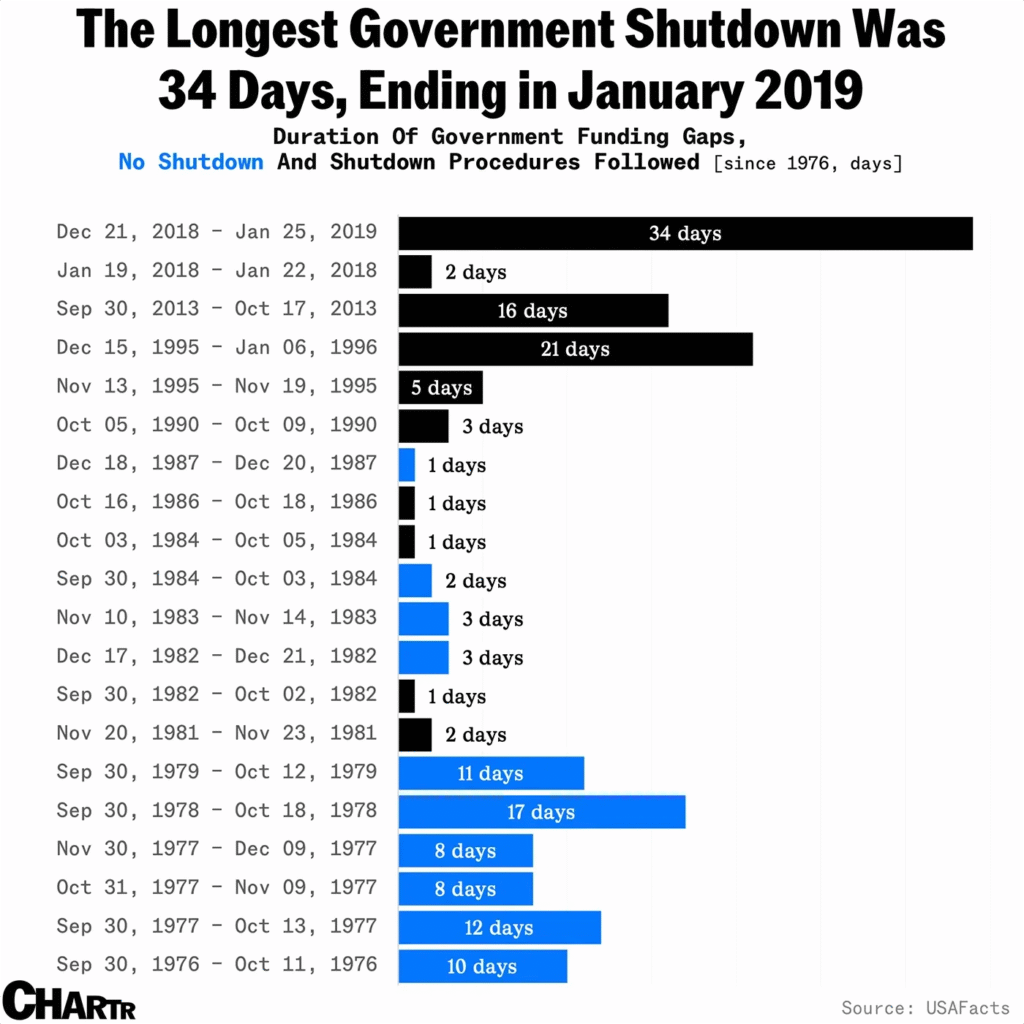Introduction: The October 2025 Shutdown
When Congress failed to agree on a last-minute deal on October 1, 2025, the United States faced its eleventh federal government shutdown — forcing hundreds of thousands of workers into furlough, halting essential services, and sending shockwaves through the nation.
Though often discussed in the abstract, government shutdowns have tangible consequences — missed paychecks, shuttered programs, and an atmosphere of uncertainty for millions of Americans.
What led to this impasse, and how does it compare to shutdowns of the past?
This standoff is marked by familiar accusations of brinkmanship from both parties — Republicans advocating a ‘clean’ funding extension, while Democrats insist on safeguarding healthcare subsidies and advancing key priorities before any agreement is reached.
The fallout and costs reach far beyond furloughed government workers. It also affects broader economic stability. and millions of Americans who rely on federal services.
A Brief History of Federal Shutdowns
This is the 11th shutdown in our history. However, before the 1980s, funding gaps typically did not affect government operations, as agencies assumed funding would eventually be approved.
The most recent prior shutdown, in 2019, centered on funding for President Trump’s border wall with Mexico and dragged on for 34 days — setting the record for the longest shutdown in American history.
While the duration of this shutdown remains uncertain, historical shutdowns offer important perspective.

via voronoi
Obviously, the duration of this one is unclear. It is likely it will end via a “continuing resolution” which has ended every shutdown since the 90s.
As a whole, funding gaps have grown longer in recent shutdowns, so many are assuming this one will continue that trend.
Although we hope that cooler heads will prevail, today’s sharply divided political climate makes a swift end to the shutdown unlikely.
Is It Different This Time?
According to The Hill, GOP senators thought they were close on Thursday to a bipartisan agreement that would have led to the end of the shutdown. On Friday, Senate Democratic Leader Chuck Schumer urged his colleagues to resist the House-passed funding measure until Republicans made significant concessions on extending the health premium tax credits.
It’s entirely possible that Trump will use this shutdown as further justification to cut agencies and fire federal employees. It’s also a potential tool to put pressure on Democrats to vote for the funding bill to pass.
Regardless, as of today, Democrats are holding firm in their opposition, with Schumer arguing that 70% of Americans support the ACA premium tax credit.
What’s at Stake?
It’s an interesting time to be an American. Last week, we talked about the potential need to reimagine the American Dream: Although buying a home and raising a family has become more challenging, we simultaneously live in an era of unprecedented prosperity and opportunity.
Despite these advantages, rates of unhappiness, loneliness, and distrust in institutions have been rising. This tension between abundance and discontent now defines the American experience. It’s a sobering reminder that material progress does not guarantee unity, shared purpose, or collective well-being.
As Americans await a resolution, this stalemate serves as a reflection of deeper divisions within our society. Beyond deadlines and dollars, the shutdown raises a pressing question:
What will it take for our leaders (and our nation) to move beyond gridlock and toward lasting unity?
Onwards!
